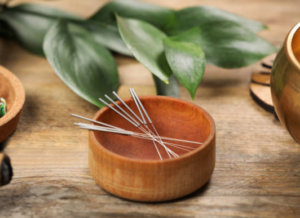Alternatives to Traditional Medicine

In our pursuit of beauty and wellness, we often encounter various forms of discomfort, whether it’s physical pain, inflammation, or stress. While traditional medicine offers effective solutions, there’s a growing interest in holistic approaches to pain management that focus on treating the root cause of discomfort rather than just alleviating symptoms. In this comprehensive guide, we’ll delve into the world of holistic beauty and explore alternative pain management techniques that prioritize natural, sustainable methods.
Holistic pain management encompasses a range of techniques that address not only the physical symptoms but also the emotional, mental, and spiritual aspects of discomfort. Unlike traditional medicine, which often relies on medications and invasive procedures, holistic approaches emphasize the interconnectedness of mind, body, and spirit in promoting overall well-being.
Mind-Body Practices
- Meditation: Meditation is a centuries-old practice that involves training the mind to focus on the present moment, cultivate awareness, and promote inner peace and tranquility. There are various forms of meditation, including mindfulness meditation, loving-kindness meditation, and guided imagery. Research has shown that regular meditation practice can help reduce pain perception, alleviate symptoms of anxiety and depression, and improve overall quality of life for individuals with chronic pain conditions.
- Mindfulness: Mindfulness is the practice of paying attention to the present moment with openness, curiosity, and acceptance. It involves bringing awareness to our thoughts, emotions, bodily sensations, and the environment without judgment. Mindfulness-based interventions, such as Mindfulness-Based Stress Reduction (MBSR) and Mindfulness-Based Cognitive Therapy (MBCT), have been shown to be effective in reducing pain severity, enhancing pain tolerance, and improving pain-related quality of life.
- Yoga: Yoga is a holistic practice that combines physical postures (asanas), breathwork (pranayama), and meditation to promote flexibility, strength, relaxation, and inner balance. Many forms of yoga, such as Hatha, Vinyasa, and Restorative yoga, can be adapted to suit individuals with varying levels of fitness and mobility. Research suggests that yoga can help alleviate chronic pain conditions such as low back pain, osteoarthritis, and fibromyalgia by reducing muscle tension, improving joint mobility, and enhancing body awareness.
- Tai Chi: Tai Chi is a gentle form of martial arts that emphasizes slow, flowing movements, deep breathing, and mindful awareness. Often described as “meditation in motion,” Tai Chi promotes relaxation, balance, and harmony in both body and mind. Studies have shown that Tai Chi can be beneficial for individuals with chronic pain conditions such as arthritis, fibromyalgia, and chronic low back pain, improving pain symptoms, physical function, and overall well-being.
- Breathwork: Breathwork techniques, such as deep diaphragmatic breathing, belly breathing, and alternate nostril breathing, can help induce a state of relaxation, reduce muscle tension, and calm the nervous system. By focusing on the breath, individuals can shift their attention away from pain and stress and cultivate a sense of calm and equilibrium. Incorporating breathwork into daily routines or during times of acute pain can provide immediate relief and promote long-term resilience.
- Guided Imagery: Guided imagery involves using the power of imagination and visualization to evoke positive mental images and sensations that promote relaxation and healing. By creating vivid mental images of peaceful scenes, soothing landscapes, or healing experiences, individuals can shift their focus away from pain and engage the body’s natural relaxation response. Guided imagery can be practiced independently or with the guidance of a trained facilitator through audio recordings or guided sessions.

Nutritional Support
- Anti-Inflammatory Diet:
An anti-inflammatory diet focuses on reducing foods that promote inflammation while increasing the consumption of foods that have anti-inflammatory properties. Key components of an anti-inflammatory diet include:
Fruits and Vegetables: Colorful fruits and vegetables are rich in antioxidants, vitamins, and phytonutrients that help combat inflammation and oxidative stress. Aim to incorporate a variety of fruits and vegetables into your diet, including berries, leafy greens, cruciferous vegetables, and bright-colored peppers.
Healthy Fats: Healthy fats, such as omega-3 fatty acids found in fatty fish (e.g., salmon, sardines, mackerel), flaxseeds, chia seeds, and walnuts, have potent anti-inflammatory properties. Include sources of healthy fats in your diet to help reduce inflammation and support overall health.
Whole Grains: Choose whole grains such as quinoa, brown rice, oats, and barley over refined grains to provide fiber, vitamins, and minerals that support gut health and reduce inflammation.
Lean Proteins: Opt for lean sources of protein such as poultry, fish, legumes, and tofu to provide essential amino acids for tissue repair and muscle function without contributing to inflammation.
Herbs and Spices: Incorporate herbs and spices with anti-inflammatory properties into your cooking, such as turmeric, ginger, garlic, cinnamon, and rosemary, to add flavor and promote healing.
- Herbal Remedies:
Herbal remedies have been used for centuries to manage pain and inflammation. Certain herbs and botanicals have analgesic, anti-inflammatory, and antioxidant properties that can help alleviate pain and support overall well-being. Some commonly used herbal remedies for pain management include:
Turmeric: Turmeric contains curcumin, a potent anti-inflammatory compound that has been shown to reduce pain and inflammation in conditions such as arthritis, rheumatoid arthritis, and osteoarthritis.
Ginger: Ginger has analgesic and anti-inflammatory properties that can help alleviate pain and reduce inflammation. It has been traditionally used to relieve pain associated with arthritis, migraines, and menstrual cramps.
Boswellia: Boswellia, also known as Indian frankincense, contains boswellic acids that have anti-inflammatory and analgesic properties. Boswellia supplements may help reduce pain and improve joint function in individuals with osteoarthritis and rheumatoid arthritis.
White Willow Bark: White willow bark contains salicin, a compound that is similar to aspirin and has analgesic and anti-inflammatory effects. It has been used traditionally to relieve pain and inflammation associated with conditions such as osteoarthritis and low back pain.
Devil’s Claw: Devil’s claw is a plant native to southern Africa that has been used traditionally to treat pain and inflammation. It contains harpagosides, compounds that have been shown to have anti-inflammatory and analgesic effects.
Alternative Therapies
- Acupuncture: Acupuncture is a traditional Chinese medicine practice that involves inserting thin needles into specific points on the body to stimulate energy flow and promote healing. Research suggests that acupuncture may help relieve pain by triggering the release of endorphins, the body’s natural painkillers, and modulating neural pathways involved in pain perception.
- Massage Therapy: Massage therapy is a versatile modality that can help reduce muscle tension, improve circulation, and promote relaxation. Different techniques, such as Swedish massage, deep tissue massage, and trigger point therapy, can be tailored to address specific pain symptoms and underlying musculoskeletal issues. Regular massage sessions can complement other pain management strategies and contribute to overall well-being.
- Aromatherapy: Aromatherapy harnesses the therapeutic properties of essential oils derived from plants to promote physical, emotional, and mental healing. Certain essential oils, such as lavender, peppermint, and eucalyptus, have analgesic, anti-inflammatory, and relaxant properties that can help alleviate pain and discomfort. Inhalation, topical application, and diffusion are common methods of using essential oils for pain management.

Holistic Lifestyle Practices
- Stress Management:
Chronic stress can exacerbate pain and inflammation, disrupt sleep patterns, and negatively impact overall health. Therefore, managing stress is essential for effective pain management and optimal well-being. Holistic stress management techniques focus on cultivating relaxation, resilience, and emotional balance. Some effective stress management practices include:
Deep Breathing Exercises: Deep breathing exercises, such as diaphragmatic breathing and belly breathing, can activate the body’s relaxation response, reduce muscle tension, and promote feelings of calm and relaxation.
Progressive Muscle Relaxation: Progressive muscle relaxation involves tensing and releasing different muscle groups to promote relaxation and reduce physical tension. This technique can help alleviate muscle stiffness, headaches, and other physical symptoms of stress.
Stress-Reducing Activities: Engaging in activities that bring joy, pleasure, and a sense of fulfillment can help counteract the negative effects of stress. Whether it’s spending time in nature, practicing creative arts, or connecting with loved ones, finding enjoyable activities can promote emotional well-being and resilience.
- Sleep Hygiene:
Adequate sleep is essential for healing, recovery, and overall well-being. Poor sleep quality or insufficient sleep can worsen pain perception, impair cognitive function, and compromise immune function. Therefore, prioritizing good sleep hygiene is crucial for effective pain management. Some tips for improving sleep hygiene include:
Establishing a Regular Sleep Schedule: Going to bed and waking up at the same time each day can help regulate your body’s internal clock and improve sleep quality.
Creating a Relaxing Bedtime Routine: Engaging in calming activities before bed, such as reading, taking a warm bath, or practicing relaxation techniques, can signal to your body that it’s time to wind down and prepare for sleep.
Optimizing Sleep Environment: Creating a comfortable sleep environment that is dark, quiet, and free from distractions can promote restful sleep. Consider using blackout curtains, earplugs, or white noise machines to create a sleep-conducive environment.
Limiting Stimulants and Electronics: Avoiding caffeine, nicotine, and electronic devices (e.g., smartphones, tablets) close to bedtime can help reduce sleep disturbances and promote better sleep quality.

- Social Connection:
Human connection and social support are essential for emotional well-being and resilience. Cultivating meaningful relationships and fostering social connections can provide a sense of belonging, support, and comfort during times of pain and adversity. Some ways to nurture social connections include:
Staying Connected: Make an effort to stay in touch with friends, family members, and loved ones through phone calls, video chats, or in-person visits. Socializing and sharing experiences with others can provide emotional support and a sense of camaraderie.
Joining Support Groups: Joining a support group or community of individuals who share similar experiences can provide validation, understanding, and practical advice for managing pain and coping with challenges. Online forums, local support groups, and community organizations may offer opportunities for connection and support.
Seeking Professional Help: If feelings of isolation, loneliness, or depression persist, consider seeking support from a mental health professional or counselor. Therapy can provide a safe space to explore emotions, learn coping strategies, and develop resilience skills to navigate pain and adversity.
In the pursuit of holistic beauty and wellness, embracing alternative approaches to pain management can offer valuable insights and solutions that complement traditional medical interventions. By addressing the underlying causes of pain and discomfort through mind-body practices, nutritional support, alternative therapies, and holistic lifestyle practices, we can cultivate a deeper sense of well-being and resilience that radiates from the inside out. Remember that each individual is unique, so it’s essential to explore different modalities and find what works best for you. By taking a holistic approach to pain management, you can empower yourself to live a life of vitality, balance, and beauty.




